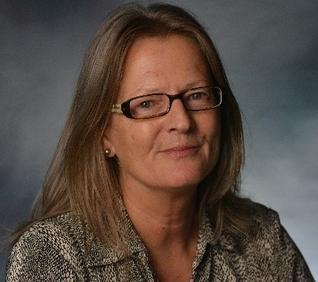ITI Profile: Kim Eddy FITI
We talk to translator Kim Eddy about recent projects and life in the Canaries in the latest in our ITI Profile series.

What are your subject specialisms in your freelance translation work?
The humanities, mainly art, fisheries and oceanography, and increasingly psychology.
What are the particular challenges when working on a translation project?
I would say that terminology is always a challenge, whatever the subject area. Using a CAT tool (SDL Trados, in my case) and corpus mining tools (AntConc, Archivarius, Sketch Engine, etc.) aids cohesion and helps with identifying collocations and terms used in any given genre.
Is there a recent project you are particularly proud of?
The one that I am currently working on: a chapter on interpreting in situations of gender violence (to be published in late 2018). For a couple of years, I delivered speeches on the European Masters in Conference Interpreting at La Laguna University (Tenerife), which was where I found out about the European project Speak Out for Support (JUST/2011/JPEN/2912) whose objective is to improve training for professional interpreters in contexts of gender violence. I wrote an article for the ITI Bulletin (July–August 2015, Breaking the silence) on this very subject.
What are the biggest changes you have noticed in working as a translator since you started?
By far the most overwhelming and mind-boggling is technology. I started translating in the era of electric typewriters (a godsend at the time!). But in terms of improving efficiency, research and turnaround times, I'd say the Internet wins hands down.
What can you see out of your office window?
My neighbour's plant-filled attic terrace on the opposite side of the street, and the Anaga mountains in the background.
How do you keep abreast of knowledge and new developments in the translation sector?
By reading industry publications, e.g. the ITI Bulletin, In Other Words and The Linguist, listening in on the occasional webinar and by attending CPD events, mainly the Mediterranean Editors and Translators workshop seasons in Barcelona and the annual meeting or METM.
You also work as an editor/reviser of academic papers for publication. What sort of things do you find yourself working on?
Quite a broad range actually, but more recently I have been editing/revising papers on literature, medicine (mainly pathology), oceanography, psychology and sports science.
What do you like about living in Tenerife?
The diversity of the island in terms of microclimates means that I can indulge my passion for the outdoors—cycling, hiking, running and swimming, mainly—all year round.
What are your favourite places in the Canaries?
The islands are very different and each has its own idiosyncrasies. I have visited them all, with the exception of the tiny island of La Graciosa, just off the coast of Lanzarote. But the place that draws me back time and again is Las Cañadas del Teide National Park. At 3,718 metres, Pico Teide is Spain's highest peak. Walking on, near or in the shadow of the volcano is always inspiring.
If you were going to have a holiday in the UK, where would you go?
There is only one place in my heart and that is Cornwall, my home. But I could definitely wrench myself away to visit the Scottish Highlands, the Hebrides and Shetland.
